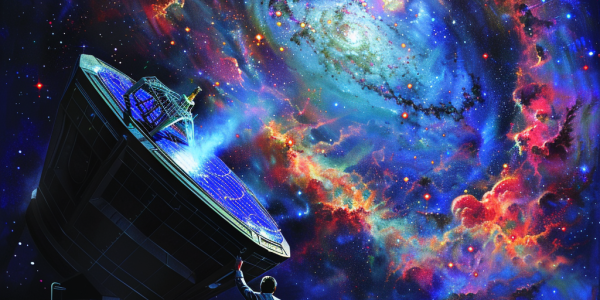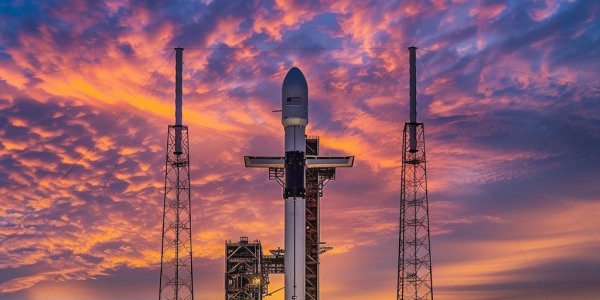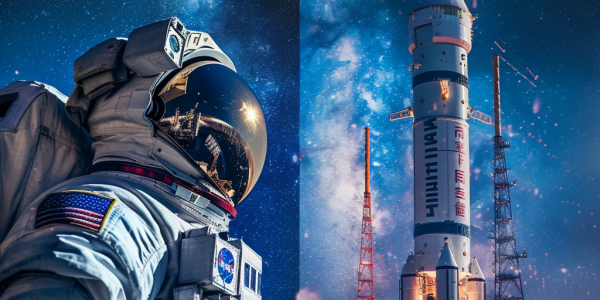NASA’s Juno Captures Mysterious ‘Abyss’ on Jupiter
Discover the stunning Abyss on Jupiter, featured in the Astronomy Picture of the Day on November 3, 2024. Captured by NASA’s Juno spacecraft, this dark cloud phenomenon reveals the complexities of Jupiter’s atmosphere. Learn about its intriguing characteristics and the ongoing Juno mission that continues to unlock the mysteries of our solar system’s largest planet.
Massachusetts Senators Seek Clarity on Chandra X-ray Observatory Funding
A bipartisan group of U.S. senators from Massachusetts is advocating for the Chandra X-ray Observatory’s funding amid potential budget cuts. As a cornerstone of astrophysics for 25 years, Chandra has enabled groundbreaking discoveries about the universe. The senators’ inquiry seeks clarity on its future and operational status, highlighting the importance of local advocacy in scientific funding decisions.
SpaceX Scrubs Falcon 9 Launch Due to Helium Issue, Aiming for Backup Opportunity
SpaceX’s Falcon 9 rocket launch for the Starlink 6-77 mission faced a delay due to a helium issue, halting the countdown just 2 minutes and 36 seconds before liftoff. Scheduled to enhance global internet coverage, this mission was part of a record-breaking launch weekend at Cape Canaveral. Despite the setback, SpaceX remains committed to advancing satellite deployment and is preparing for a backup launch opportunity and a Dragon capsule resupply mission to the ISS.
Blue Origin Advances New Glenn Rocket Preparations with First Stage Booster Transport
Blue Origin is gearing up for the inaugural launch of its New Glenn rocket, successfully transporting the first stage booster to Cape Canaveral Space Force Station. With a target launch window in November, the impressive 188-foot booster, powered by seven BE-4 engines, marks a significant milestone in the company’s quest to establish a reliable heavy-lift launch vehicle. As excitement builds, Blue Origin’s preparations highlight its commitment to advancing commercial space exploration.
Significant Developments in Space Policy Amid Upcoming Events and Missions
From October 27 to November 3, 2024, significant events in space policy unfold, including NASA’s Crew-8 mission return and China’s upcoming Tiangong-3 launch. The American Astronautical Society’s annual Von Braun symposium in Huntsville, Alabama, will feature key discussions on Artemis, nuclear propulsion, AI in space, and more. Join the conversation on the future of space exploration.
Voyager 1 Reestablishes Communication After Blackout, Continues Interstellar Exploration
NASA’s Voyager 1 spacecraft, launched in 1977, has reestablished communication after a technical issue caused a blackout. Now 47 years old and 15 billion miles from Earth, Voyager 1 continues to send valuable data from interstellar space, enhancing our understanding of cosmic rays and the interstellar medium. The recent activation of a backup transmitter showcases the ingenuity of NASA’s engineers as they navigate the challenges of aging technology in deep space exploration.
NASA’s ER-2 Aircraft Advances Earth Science in PACE-PAX Mission
NASA’s ER-2 aircraft has successfully completed over 80 flight hours for the PACE-PAX mission, enhancing our understanding of Earth’s systems. Operating at altitudes up to 65,000 feet, the ER-2 validates satellite data and supports vital research on environmental changes and mineral resources. This collaborative initiative involves multiple organizations, showcasing the importance of interdisciplinary efforts in Earth science and resource management.
Boeing’s Starliner Program Faces $6.2 Billion Loss Amid Financial Struggles
Boeing’s Starliner program faces significant financial challenges, reporting a staggering loss of nearly $6.2 billion last quarter. Despite the ongoing struggles, CEO Kelly Ortberg did not address the program during a recent call, raising concerns among stakeholders. With total losses reaching $1.85 billion due to technical issues and project delays, the future of the Starliner remains uncertain as Boeing evaluates its next steps amidst increasing demand for commercial crew transportation.
Commercial Space Industry Prepares for Post-ISS Era
As the countdown to 2030 begins, the commercial space industry is preparing for a significant transition in low-Earth orbit (LEO) operations, particularly with the impending replacement of the International Space Station (ISS). Companies like Axiom Space and VAST are leading the charge in constructing commercial space stations, ensuring the continuation of vital scientific research. NASA’s Commercial LEO Destinations program plays a crucial role in this shift, fostering a competitive market for LEO operations and redefining humanity’s approach to space exploration.
NASA’s Lunar Gateway: A New Era in Moon Exploration
NASA’s Lunar Gateway is set to revolutionize lunar exploration with its innovative design, serving as a floating space station orbiting the Moon. This pioneering project will support the Artemis missions, enabling sustainable astronaut operations, scientific research, and future human settlement on the lunar surface.










